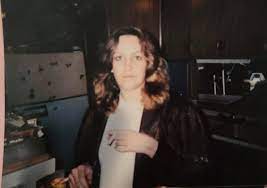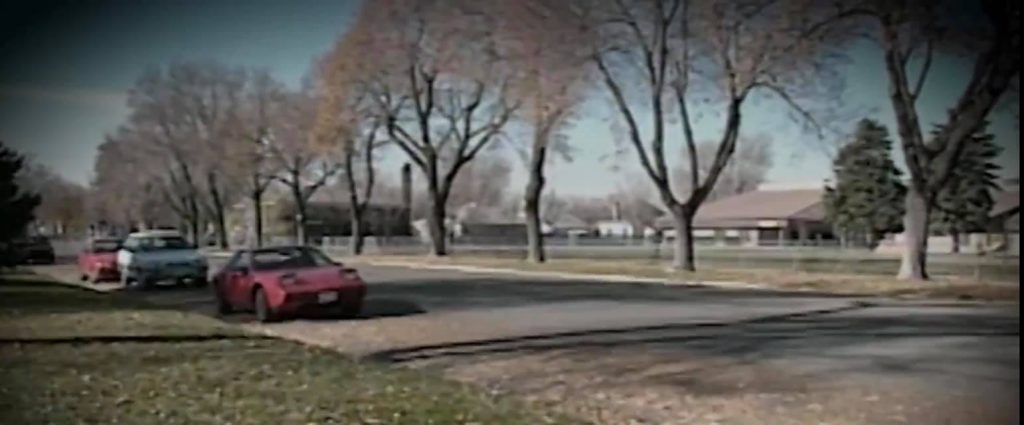Two women in the same city lived similar lives and died in similar ways, yet only one received justice. Why did police stop investigating the murder of Melissa Griggs?
Episode Media




Episode Sources
- Melissa Griggs – SLCPD
- Justice for Melissa Ross Griggs – Facebook
- Police seeking link between slayings of 2 SL Prostitutes
- Police unsure if slayings of prostitutes linked
- Grim Tally: Salt Lake City sets homicide record at 28
- QUEST FOR JUSTICE: Melissa Griggs
- The Unsolved Murder of Melissa Ross Griggs
- The Justice Files: Who killed ‘Missy?’
- The Justice Files: In search of mother
Episode Transcript
Welcome back to Bite-Sized Crime! This week’s case is one that I came across while researching the story of Krystal Beslanowitch for last week’s episode. As I dug into Krystal’s story, I saw the same name mentioned a handful of times – Melissa Griggs, a sex worker who had been murdered just weeks before Krystal. Although police said they were looking at a possible connection between the cases, it was obvious that the two had not received the same attention from investigators or the media. Other than their ages, Krystal and Melissa lived incredibly similar lives, and sadly, died in similarly tragic ways. So why did Krystal’s case get the full power of the Salt Lake City police department for decades, while Melissa’s case seemed to get the bare minimum?
As I turned my attention to Melissa’s case, I realized that there was very little information available from local or national news sources. However, I soon discovered several interviews with Jennifer Ross, Melissa’s niece. Decades after Melissa’s murder, Jennifer decided to start her own investigation and has been fighting to bring attention to her aunt’s case. Most of the information I gathered is from these interviews and from the police reports that Jennifer was able to access.
So what happened to Melissa? How did she end up a footnote in someone else’s murder? Her sad story begins in Ohio in the 1960s.
Melissa Griggs, known as “Missy” by her family and friends, grew up in a middle class midwestern family. Early in Melissa’s life, her mother was diagnosed with multiple sclerosis and was very sick for much of Melissa’s childhood. She eventually became so ill that she was taken to live in a nursing home in Illinois. Melissa’s father left the family and remarried; Melissa and her siblings were left to their own devices. When Melissa was 14, she got pregnant. She was sent to live with family friends in Chicago, where she gave birth and gave the baby up for adoption.
Melissa was then sent to live with her elderly grandmother, who was unable to provide a stable living situation for a teenager who had already experienced so much trauma. Melissa quickly headed down a path of self-destruction, getting involved in drugs and prostitution.
In the 1980s, Melissa got married and gave birth to her second child. But the relationship soon ended in divorce, and Melissa walked away from her young son. Over the next decade, Melissa bounced between Illinois, Ohio, Oregon, and Washington. In Seattle, Melissa was arrested on drug charges and received probation, but she absconded on the probation and ended up in jail for several months.
But by the mid-90s, Melissa seemed to be getting her life back on track. She told her family that she had gotten sober and was planning to get married.
But on Thanksgiving Day in 1995, her family received a devastating phone call: Melissa’s body had been found on a Salt Lake City street.
Her family was shocked. They hadn’t even known that Melissa was in Utah. And they had just spoken to her recently – she had asked them to send money so she and her boyfriend could buy a Thanksgiving turkey. How had she ended up dead?
Melissa had apparently been living in Utah for a while, even picking up criminal charges for shoplifting and prostitution during her time there. Court records listed her as transient, showing that she moved around from place to place, including seedy motels and friends’ couches.
In November of 1995, Melissa was living with an older man in West Valley City who was known for taking in transients. Around 1:30 in the morning on Thanksgiving Day, Melissa asked the man to borrow his car. She said she was going to meet someone who owed her money.
At 2:30 that same morning, a man was awakened by his barking dogs. He looked out his front window and saw a car idling on the street outside. Not thinking anything was suspicious, the man went back to bed. When he woke again at 6:45, he noticed that the car was still there. When he went outside to investigate, he discovered the body of a woman in the car. The man immediately called 911.
When police arrived, they found a bloody scene. The woman was lying face down across the front seats of the small hatchback car. She was nude from the waist down, wearing only a pink sweatshirt. Other pieces of clothing were scattered in the backseat. Blood covered her face; it appeared she had been severely beaten. But she had clearly put up a struggle – blood was splattered across the front and back seats of the car, and the rearview mirror had been broken off.
As investigators processed the scene, they noted that there was a used condom on the floorboard of the car, and a condom wrapper on the dashboard. However, neither item had any blood on it. A pack of cigarettes and a lighter were found, as well as a pair of blue rubber gloves and a large jar of change that was undisturbed. The keys to the car were missing.
The victim was soon identified as 33-year-old Melissa Griggs. An autopsy revealed that not only had Melissa been beaten, she had been manually strangled until she died. The medical examiner noted that there were fresh track marks on her arms, indicating that she had been actively using drugs, but there was no toxicology report to say whether she had drugs in her system when she died. No drug paraphernalia was found in the car.
Investigators began looking into several promising leads. Melissa had supposedly been going to meet a friend who worked as a cab driver; he had allegedly supplied her with heroin in the past. They also looked into the man who had found her body on Thanksgiving morning. The neighborhood was a popular spot among sex workers and drug dealers. Detectives even explored the idea that Melissa had picked up someone who then decided to kill her in the moment.
Then, as suddenly as it had begun, the investigation stopped. The last report in Melissa’s case file was an two-paragraph interview with an unnamed witness on December 5, 1995, just two weeks after her death. Two weeks of investigation, two weeks of solid leads, then nothing. With so much physical evidence and momentum in the case, why did police suddenly stop investigating?
For nearly nine years, Melissa’s case sat untouched. In August 2004, a detective was assigned to look into a new lead. The police report stated that the individual in question had recently been booked on suspicion of a homicide that was very similar to Melissa’s. Who was the individual? The brother-in-law of the man who discovered Melissa’s body.
This brother-in-law was a known cocaine user and frequenter of sex workers in the Salt Lake City area. He had a history of domestic violence, including an incident where he attempted to strangle his wife. After Melissa’s murder, he suddenly stopped visiting the house. Unfortunately, he has moved to southern Utah in the years since, and it’s unclear whether he was ever questioned in relation to Melissa’s case.
The report mentioned that there was DNA evidence in the case that needed to be sent to the state crime lab. We know there was DNA on the used condom found in the car, but according to later reports, there was also DNA found inside Melissa that did not match the DNA found on the condom. Reports indicate that detectives believed Melissa met someone for a sexual encounter, but was later attacked by someone else who beat and strangled her, then sexually assaulted her postmortem.
Because Melissa’s purse and keys were missing from the car, her niece believes that whoever assaulted Melissa took her “shoot kit” – the items she would have needed to inject herself with heroin. Jennifer also believes that the killer knew Melissa – the fact that she was beaten so severely and then manually strangled indicates a very personal attack.
Jennifer also has another theory. Over the years, Melissa had been charged with multiple serious felonies, but had never done any real time. At one point she was charged with amateur recruitment into prostitution, meaning that she was recruiting other girls for sex work. She was also arrested when she got caught driving a stolen vehicle, but the charges were later dropped. In Seattle, she had been charged with manufacturing and possession, but had only received probation. Is it possible that Melissa had been working as a police informant? Why else would she have received such lenient punishments for such serious crimes? Perhaps that’s why police stopped investigating her case after such a short time.
There are also some interesting connections to Krystal Beslanowitch’s case. Jennifer says there is evidence that Melissa and Krystal knew each other and that they lived in the same motel for some time. Also, Melissa often purchased heroin from a cab driver, and one of the original suspects in Krystal’s case was a cab driver who was obsessed with her. The cab driver was questioned in Krystal’s case, but not in Melissa’s. Unfortunately that is where the similarities end; when Krystal’s killer was eventually found, his DNA did not match anything from Melissa’s crime scene.
As the years pass, Melissa’s case gets harder and harder to solve. Many of the people involved in Melissa’s life in Utah have since passed away and can no longer be questioned. Jennifer told a local news station, “I just feel like somebody has to know something, remember something. I just feel like we’re running out of time.”
What really breaks my heart about Melissa’s case is how she was treated as expendable in life and even in death. Her remains were never claimed by her family and were left with the medical examiner for decades. She was eventually buried in a potter’s field in Utah. Jennifer has been working to get her aunt’s remains sent back to Illinois where she can have a proper burial and a grave marker. Jennifer said, “It’s kind of a testament as to the way she was always treated and the way she ended up.”
Sadly, there is still very little movement on Melissa’s case. Jennifer continues to advocate for her aunt, but until someone comes forward with more information or the Salt Lake City Police Department decides to dedicate more time and resources to the case, it’s likely that Melissa’s murder will remain unsolved.
If you have any information regarding Melissa’s case, please contact the Salt Lake City Police Department at 801-799-4636. All tips are anonymous.
Please share Melissa’s story on social media. Her case deserves the same attention Krystal’s received, and she deserves the same justice. I also encourage you to listen to Jennifer’s interviews with local media – links can be found on bitesizedcrimepod.com.
